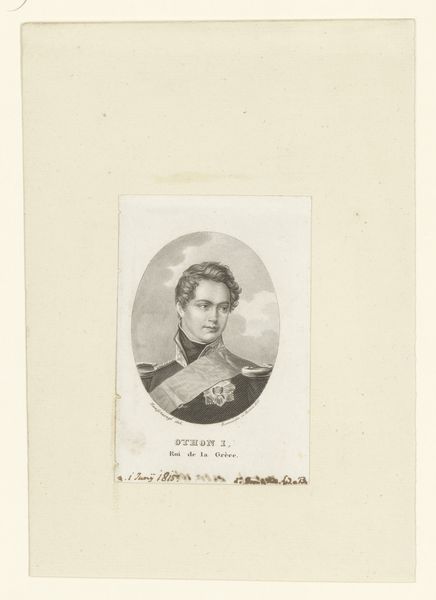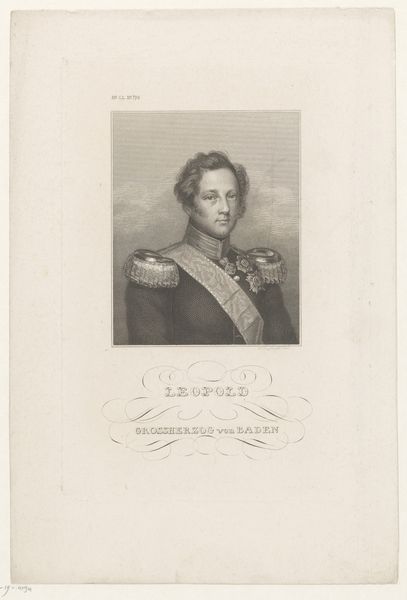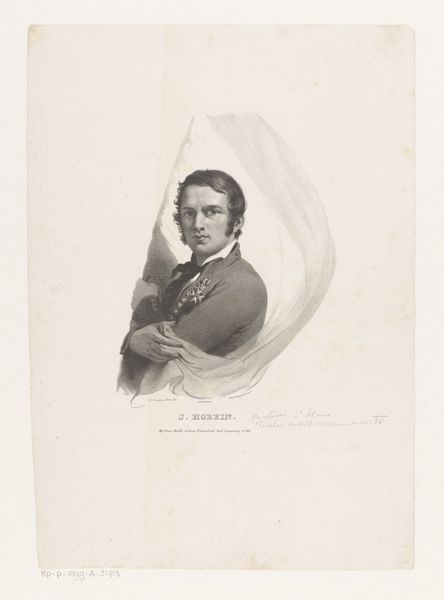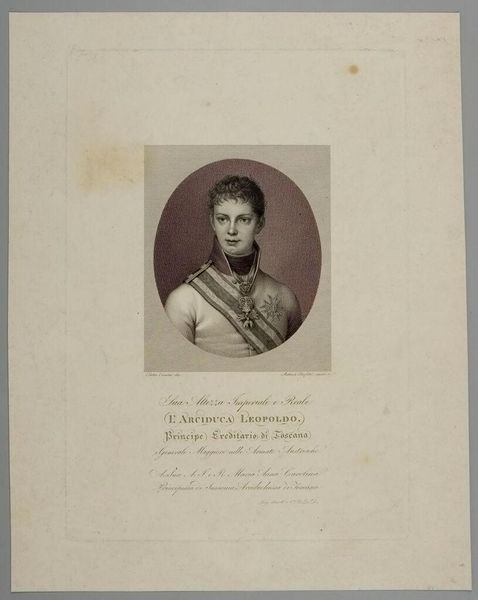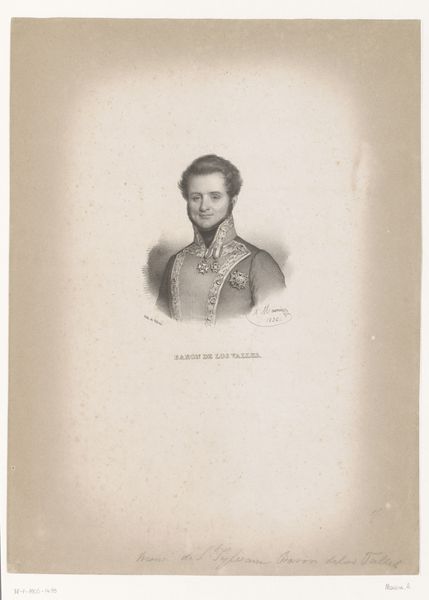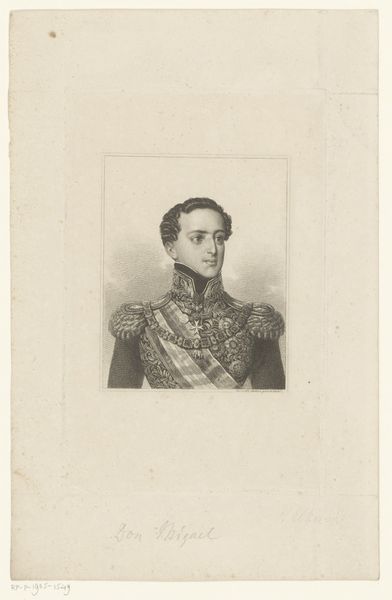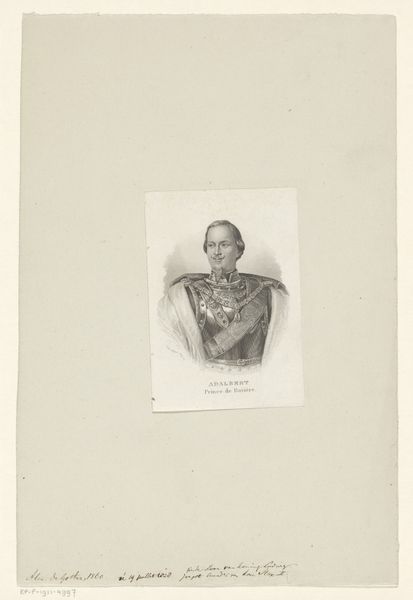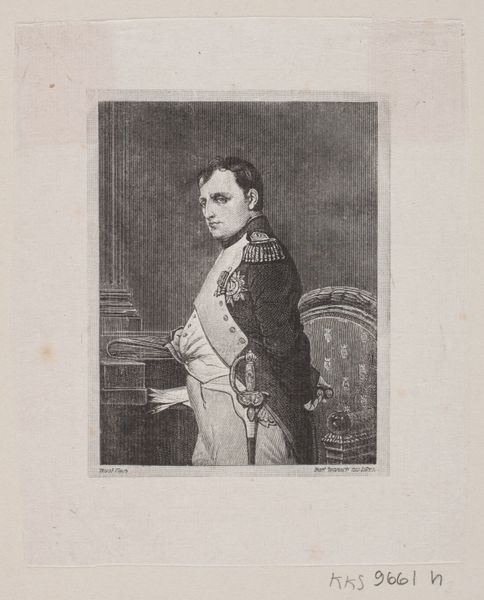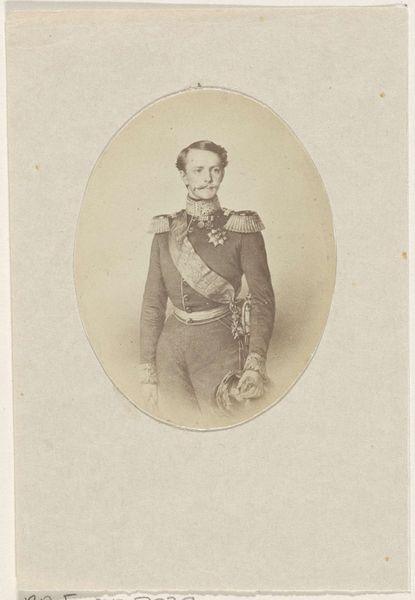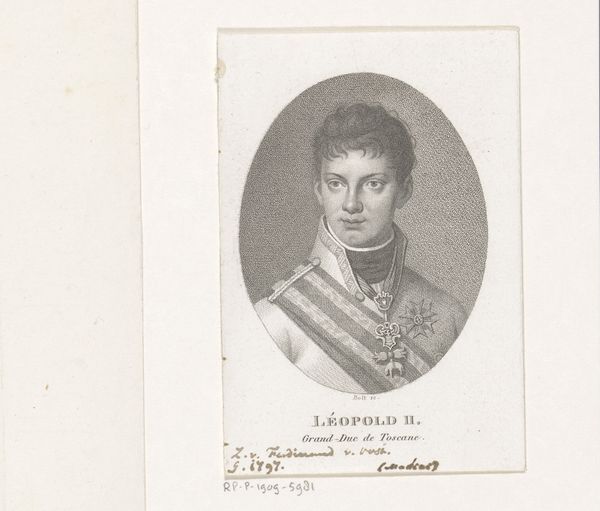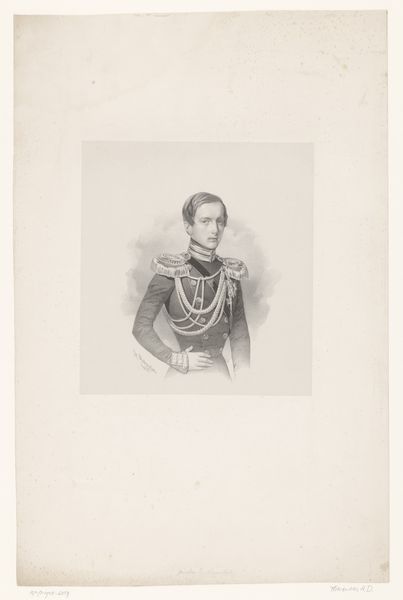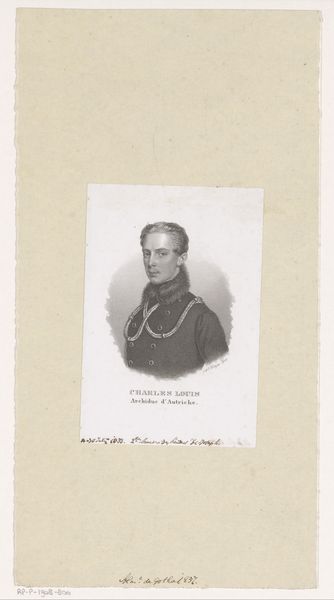
Portret van Frans van Assisi van Bourbon, gemaal van koningin Isabella II van Spanje 1842
0:00
0:00
print, engraving
#
portrait
#
neoclacissism
# print
#
pencil drawing
#
history-painting
#
academic-art
#
engraving
#
realism
Dimensions: height 107 mm, width 72 mm
Copyright: Rijks Museum: Open Domain
Curator: I'm drawn to the almost melancholic air surrounding this portrait. There's a delicacy in the rendering that softens what could easily have been a very rigid, formal image. Editor: Yes, that reserved sensibility speaks volumes, doesn't it? This is Carl Mayer’s 1842 engraving of Frans van Assisi van Bourbon, consort to Queen Isabella II of Spain. Here on display at the Rijksmuseum. A potent symbol, though perhaps of constrained power. Curator: Precisely. Notice how the artist uses the intricate detail of his military uniform, all the ribbons and medals, to define the weight of duty and responsibility. Yet his expression suggests something different. There's an inner world that those symbols are barely containing. Editor: Power can be so performative. I wonder what this image signified at a moment of rising democratic movements in Europe? An emblem of dynastic continuity perhaps, a longing for tradition amidst revolutionary change. And notice too who he married, or rather who married him; the Queen in Spain. Curator: Symbols layered upon symbols. This image also evokes a return to classicism. The idealization of the face, that careful attention to light and shadow… it almost elevates him beyond the personal, turning him into an archetype. There is also a certain sense of vulnerability depicted, especially in his gaze. What do you read in that gaze? Editor: Perhaps awareness. This is a posed presentation. Here is a historical person, sure. And while historical portraits can shape legacy, they reflect a performance. And given the complicated circumstances of Frans' marriage and role, what are we supposed to see or ignore in his gaze? What of the political theater, then as now? Curator: A complex narrative contained in a seemingly simple image. It encourages us to look beyond the surface, doesn't it, to the inner world and the cultural forces at play. Editor: Indeed, by excavating these historical layers and confronting social and historical power dynamics, images like these cease to be mere likenesses. They offer invaluable reflections on power, performance, and persistent human struggle.
Comments
No comments
Be the first to comment and join the conversation on the ultimate creative platform.
